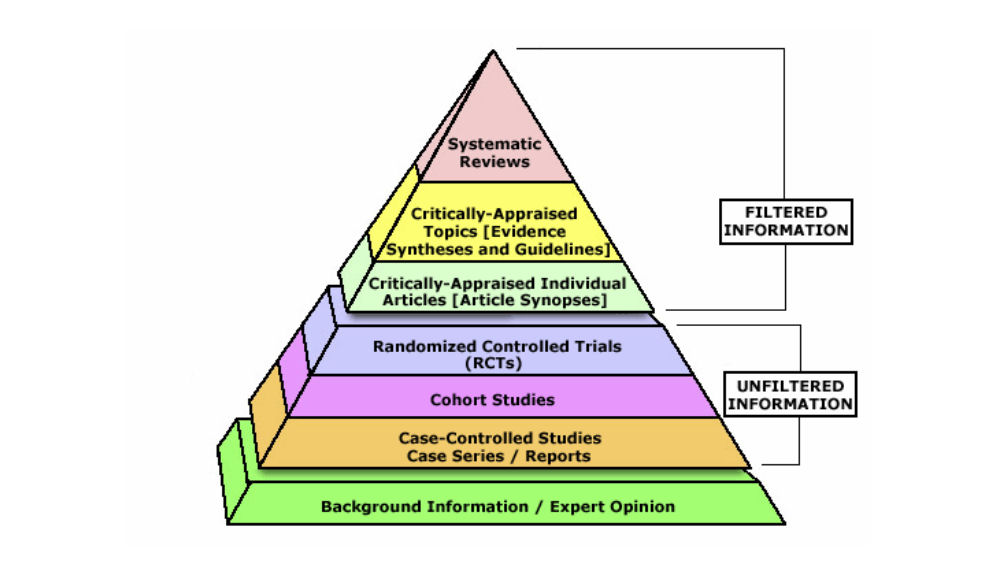Levels of Evidence
In Step 2: Acquire, we introduced the Evidence-Based Pyramid. When you are looking for an article or resource that is appropriate to answer your clinical question, you want to look for the highest level of evidence that is available to you. At the top of the pyramid are systematic reviews, but a systematic review may not have been written about your topic yet, so you might end up with a randomized controlled trial (RCT) instead.
For some topics, you may not be able to find an RCT. Consider fields like obstetrics and pediatrics, where it may not be ethical to randomize patients to receive an experimental treatment or no treatment at all. For those fields, the highest level of evidence you may be able to find to answer your question is an observational study, such as a cohort study or a case-controlled study.
It is important to recognize that the evidence pyramid is not rigid or prescriptive; think of it as a general guide to the reliability of evidence and its speed of use. For example, some systematic reviews can be of poor quality or inconclusive in their findings, and in those cases you may be better off using a well-designed RCT . It is important to always assess the quality of the individual study.
Typically, the higher your article is on the pyramid, the more reliable the evidence to answer your question. At the end of this section, there is a list of definitions of types of studies.


